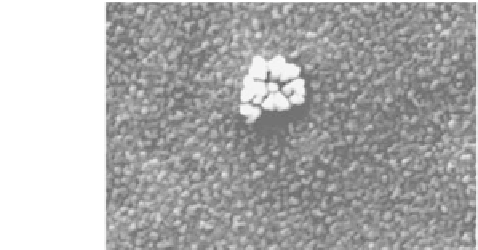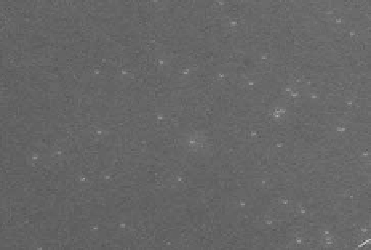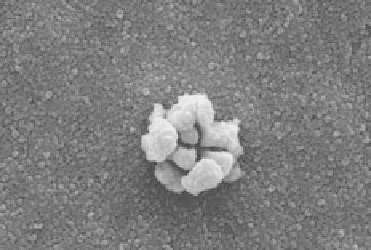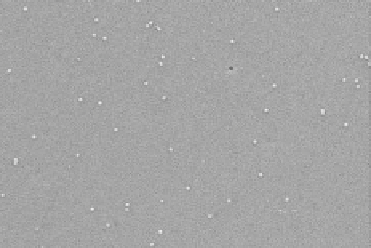Biomedical Engineering Reference
In-Depth Information
(A)
(C)
10
µ
m
500 nm
(B)
(D)
20
µ
m
500 nm
FIGURE 13.29
Scanning electron microscope (SEM) images at different stages of the fabrication: (A) poly-
styrene microbeads dispersed on the alumina membrane; (B) openings in the oxide fi lm after the beads have
been removed; (C) single electrode composed of a group of electroplated Au nanoposts; and (D) the electrode
with the deposited
o
-PPy coating.
the confi guration of the electrodes can be controlled in terms of both overall diameter and density
of electrodes on the substrate. In this work, the nanostructured electrodes are connected with
each other, allowing the recording of a single signal from a large area. However, in applications
requiring parallel recording from small areas of a brain slice, the Ti/Au seed layer can be micropa-
tterned to allow multiple electrical connections.
To provide selectivity in detection, particularly when a large concentration of other oxidizable
molecules such as AA is present in the solution, as in the case with the extracellular fl uid found
in mammalian brain, the electrodes are coated with a thin fi lm of
o
-PPy. Overoxidized PPy is
a positively charged polymer that rejects ascorbate anions at physiological pH
52
while allowing
dopamine molecules to reach the underlying conducting electrode surface.
The electrodes were tested in a phosphate-buffered solution (PBS) (pH 7.4) with a 100 µM
AA background to simulate physiological conditions. Electrodes were kept at a constant anodic
potential (0.5 V), and the change in current was monitored while small concentrations of dopa-
mine were sequentially added to the solution. The arrows in Figure 13.30 correspond to an
addition of a defi ned concentration of dopamine to the solution (25, 50, 100 nM increase in
concentration of dopamine in the sample solution) and cause a corresponding step in the current.
The size of the current step is plotted against the increase in concentration in the inset in Figure
13.30. There is a linear relationship between changes in concentration and current, demonstrat-
ing the suitability of nanoelectrodes for quantitative measurements of changing the dopamine
levels against an AA background of more than a thousand times higher concentration than that
of dopamine.
In addition to current measurements at a constant potential, a variety of other voltammetric
techniques can be used for the detection of electrochemically oxidizable species of interest. One
such technique is DPV, where the applied potential consists of a voltage ramp with superimposed








